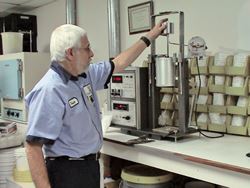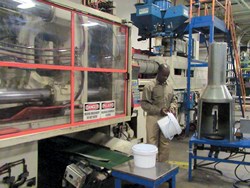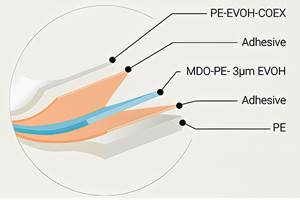Can't Succeed at Molding 'Commodities'? Best to 'Can' That Way of Thinking
So you think a can is a can is a can?
So you think a can is a can is a can? Then you probably never heard of Plastican. Since its founding in 1970 by the Clementi family in Leominster, Mass., Plastican has established a leading position in open-head pails with a line of products that demonstrate more innovation than one might expect in a so-called commodity processing operation.
Leominster is the largest of four Plastican plants and is believed to be the biggest open-head (injection molded) pail production facility in the U.S. It houses 27 presses from 700 to 2700 tons. Plastican runs two- and four-cavity molds that are designed and maintained in-house. The privately held company started in business making 4-gal food containers, but now furnishes a wide range of industrial containers to package paint, food, construction and janitorial supplies, and lots more. It molds lids as well.
In a business where price usually rules, Plastican has focused on a manufacturing and selling strategy in which product development is an interactive process between the molder and its customers. The end result is a pail engineered to give the customer an edge in the market.
“When is a pail not a pail? When it’s a solution,” says James Coletta, Plastican’s v.p. of sales and marketing. “Our process starts with a conversation with the customer. They are interested in top-line growth, especially after a recession. How can we help them?” he asks rhetorically. “Can we make them a product that’s easier to open and close, that’s more attractive, that fits better on the shelf, that saves them on shipping? It’s a consultative approach.”
Then technology steps in. Plastican makes proprietary modifications to its presses—notably in screw design—and considers its ability to mix, match, and blend various grades of HDPE and PP to be a particular advantage over its competitors, which include four or five national companies and a handful of one-plant operations that mostly compete locally. “Resin selection is a key part of what we offer,” notes Mark Keyes, director of technical services. “Our presses can blend materials with extremely different melt characteristics to tailor container performance to what the customer requires, whether it’s compression strength, environmental stress crack resistance, or post-consumer reclaim content.” In 2008, the molder opened an R&D center in Leominster to help in this effort.
In the last 15 months, Plastican brought out eight new products, including a rectangular 4.25-gal container of either HDPE or PP. Its excellent stacking strength permits 20% larger cube capacity than a like-sized round pail to cut shipping costs. Compared with typical square pails of the same size, this container also uses 10% less material. In response to increased customer demand, Plastican also added significant production capacity for its patented twist-and-lock containers. These pails open with a push of a tab and twist of the cover; twisting the lid locks it back in place.
“We’re doing much better than the industry overall,” says Coletta. “And part of the reason is that we continue to innovate. Innovation is especially critical in difficult times, because it helps us generate enthusiasm and excitement that will ultimately lead to new business.”
Related Content
PHA Compound Molded into “World’s First” Biodegradable Bottle Closures
Beyond Plastic and partners have created a certified biodegradable PHA compound that can be injection molded into 38-mm closures in a sub 6-second cycle from a multicavity hot runner tool.
Read MoreFor Extrusion and Injection-Blow Molders, Numerous Upgrades in Machines and Services
Uniloy is revising its machinery lines across the board and strengthening after-sales services in tooling maintenance, spare parts and tech service.
Read MoreFoam-Core Multilayer Blow Molding: How It’s Done
Learn here how to take advantage of new lightweighting and recycle utilization opportunities in consumer packaging, thanks to a collaboration of leaders in microcellular foaming and multilayer head design.
Read MoreRecycling Terminology Can Be a Minefield, So We Should Tread Lightly
Loose propagation of terms like “recyclable” and “compostable” has already brought down government regulations on labeling. The plastics and packaging industries should take that to heart with other recycle-related language. Like “monomaterial” for example.
Read MoreRead Next
See Recyclers Close the Loop on Trade Show Production Scrap at NPE2024
A collaboration between show organizer PLASTICS, recycler CPR and size reduction experts WEIMA and Conair recovered and recycled all production scrap at NPE2024.
Read MoreBeyond Prototypes: 8 Ways the Plastics Industry Is Using 3D Printing
Plastics processors are finding applications for 3D printing around the plant and across the supply chain. Here are 8 examples to look for at NPE2024.
Read More























